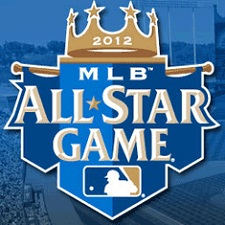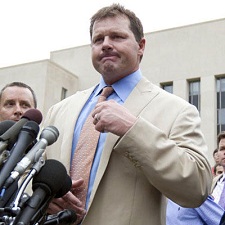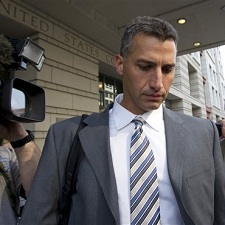LISTEN TO FANS, NOT FOX
Thursday, June 28th, 2012The idea is so obvious that I’m almost embarrassed to suggest it. Actually, I should be embarrassed because I have made the suggestion before with no success and here I am raising it again despite knowing it will be ignored. Call it a foolish effort.
But Major League Baseball has defrauded its players and fans for nine years – this year will make it an even 10 – and it’s time to admit the gimmick hasn’t worked and a new link for homefield advantage for the World Series is needed.

Before the 2003 World Series, Commissioner Bud Selig and the club owners were desperate to help Fox Sports raise its ratings for the All-Star game. What was good for Fox, they felt, had to be good for them. But the World Series homefield advantage would go to the champion of the league that wins the All-Star game?
Baseball’s premier event would have a critical element – which team would have more home games – based on an exhibition game. Lest anyone forget, the All-Star game is just that and no more, an exhibition game.
Some players have contract clauses that pay them bonuses if they make the All-Star team, but individual teams pay those bonuses. If M.L.B. feels a need to create better All-Star games by inducing players to play more aggressively, a more inspired game, offer league bonuses to the winners.
That will never happen because baseball believes players already make too much money. They’re not about to pay them even more to win an exhibition game.
But they decide that it’s appropriate to award World Series Games 1, 2, 6 and 7 – that’s considered homefield advantage – to the champion of the league that wins the All-Star game.
Advocates of the All-Star link attribute all sorts of good things to it – the players play harder, the players play longer, the managers manage differently, the managers manage more intelligently, the fans are more into the games, it improves the economy.
All right, so I made up that last benefit, but that’s the absurd level the stated benefits reach.
It’s time for baseball to stop insulting the intelligence of its players, its fans and the members of the news media, who know that the All-Star gimmick is just that, a gimmick.
The most interesting development stemming from the gimmick is that it hasn’t accomplished the sole reason for its creation. Despite this harder played, better managed game, the Fox ratings for the game have fallen six times in the 10 years of the link’s existence, including the last two years, when the ratings have been the lowest ever for a Fox televised All-Star game, 7.5 in 2010 and 6.9 last year. Viewership has also plunged to its lowest, 12.1 million and 11 million in the last two years, respectively.
These numbers unmask M.L.B. as the fraud that it has been in concocting the All-Star gimmick. Even worse than the gimmick has been the spin – I call it lies – baseball and Fox have used in trying pathetically to explain and defend the All-Star gimmick.
Baseball has recently used other gimmicks, trying to beef up interest in the game. Last year they held a fan contest to determine the “greatest moment in All-Star history.” It was such a hit that M.L.B. didn’t issue a news release announcing the winner. The winner, Stan Musial’s game-winning home run in the N.L. half of the 12th inning of the 1955 game, was announced during the Fox telecast of the game.
The impact of the contest on the game’s telecast can be seen from the game’s rating.
 M.L.B. introduced another new element last year, though not for the game itself. Unlike previous practice, players were permitted to tweet during the home run derby the day before the All-Star game. That idea seemed to be successful that I suggested, not altogether seriously, that M.L.B. allow players to tweet during the game, interacting with fans at the park and elsewhere.
M.L.B. introduced another new element last year, though not for the game itself. Unlike previous practice, players were permitted to tweet during the home run derby the day before the All-Star game. That idea seemed to be successful that I suggested, not altogether seriously, that M.L.B. allow players to tweet during the game, interacting with fans at the park and elsewhere.
It was such a bizarre idea that I was afraid they might actually adopt it for the game, but they only renewed it for the home run derby.
The proposal I am serious about, though, is the way homefield advantage should be determined for the World Series. Until the All-Star link was created in 2003, the start of the Series was rotated between leagues, one year beginning in the home park of the National League, the next year in the home of the American League champ.
Then Bill Giles or somebody came up with the All-Star link, and it has been embraced for no sensible reason.
Not that baseball wants to be fair and intelligent about the issue, its own experience offers the way to do it. Interleague play has been a hugely successful format for M.L.B., and it would serve an appropriate means of determining homefield advantage.
Selig has rightfully boasted about the success of interleague play. His public relations people issued a news release early this week showing how popular interleague play is with fans.
This year’s interleague games drew 8,742,577 fans, third highest total in the 16-year history of interleague play but only 53,362 behind the second highest and 189,807 short of the highest.
If fans like interleague play that much, let it serve baseball in a more significant way.
Have the outcome of the 252-game interleague series determine homefield advantage for the World Series. The champion of the league whose teams prevailed in the interleague segment of the schedule would get homefield advantage. That benefit would be decided by 252 legitimate games, games that count in the standings, not a single exhibition game that otherwise counts for nothing and has no reason being put in such a critical position.
Critics of the interleague idea would probably point out that the process would be one-sided because the A.L. has dominated the N.L. for the last nine years, but these things run in cycles. The N.L. once won 11 All-Star games in a row and 19 of 20.
The news release about interleague attendance quoted Commissioner Selig as saying, “Major League Baseball is enjoying a remarkable first half of the season. With strong competitive balance, historic milestones, five no-hitters, and outstanding performances from our game’s young players, our attendance is a reflection of the great momentum we have as we approach the All-Star Game.”
Selig has reason to gloat. The professional football and basketball leagues are not far removed from contentious labor negotiations. Their hockey counterpart is entering its own potentially perilous time. Baseball is prospering in the midst of labor peace.
My suggested system wouldn’t do anything for television ratings, but baseball doesn’t have to worry about Fox’s All-Star ratings. This is the new world where all-star games aren’t the attractions they were when the commissioner and I were kids. No artificial, phony gimmick is going to infuse life into baseball’s All-Star game.
The fans have spoken. They care more about interleague games than the All-Star game. Listen to them, commissioner, use what they are telling you and tell Fox, “We gave it our best shot; now we’re going to do it legitimately.”

 He wasn’t about to move 180 degrees from his original comments to authorities, but a slight shift in emphasis might make it better for Clemens and therefore more palatable for Pettitte. He would not volunteer a new version of events, but he could answer a defense question about the certainty of his recollection.
He wasn’t about to move 180 degrees from his original comments to authorities, but a slight shift in emphasis might make it better for Clemens and therefore more palatable for Pettitte. He would not volunteer a new version of events, but he could answer a defense question about the certainty of his recollection.



 Ryan, who punctuated his career with seven no-hitters and a dozen one-hitters, never pitched two of those games consecutively. He had two of them in the same season three times and three of them in one of those seasons.
Ryan, who punctuated his career with seven no-hitters and a dozen one-hitters, never pitched two of those games consecutively. He had two of them in the same season three times and three of them in one of those seasons.